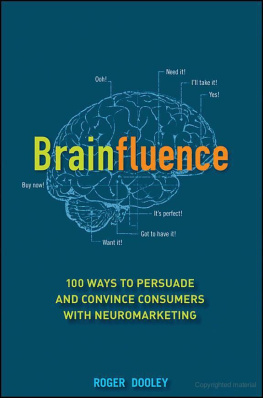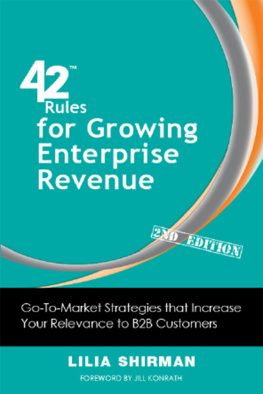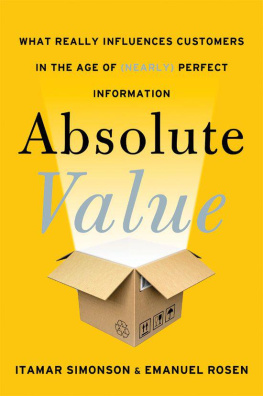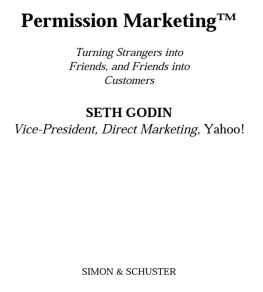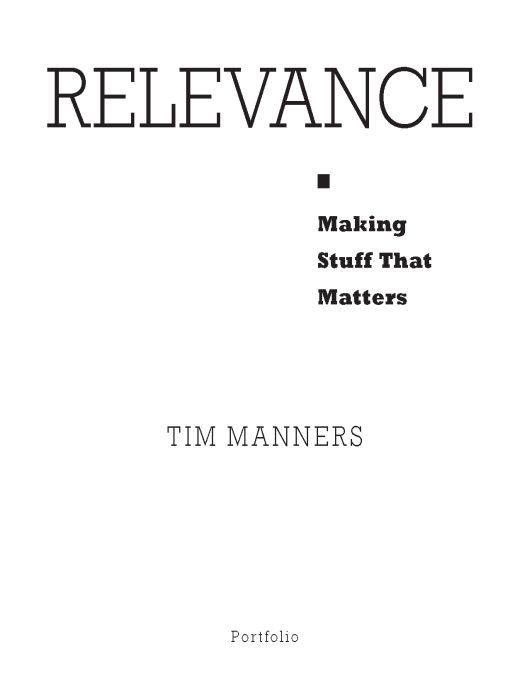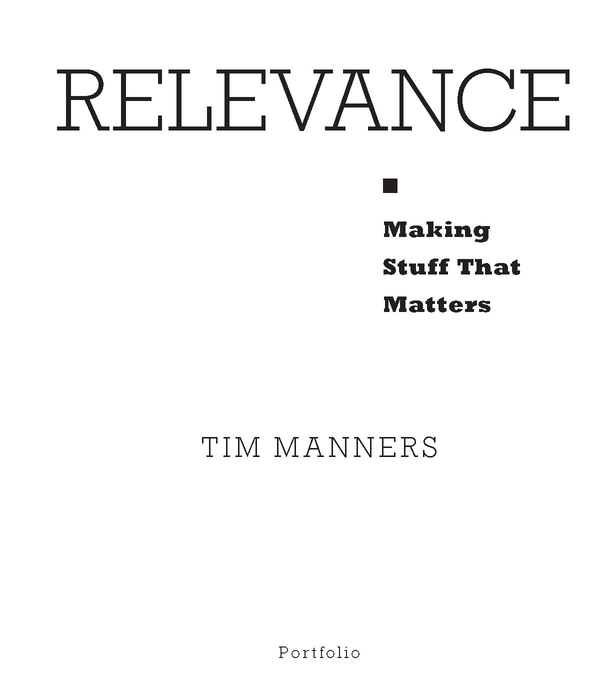Table of Contents
As long as I have strawberries, I feel prosperous.
DAVID X MANNERS (1912-2007)
Introduction
An epidemic of irrelevance has brought once-powerful brands to their knees. The virus is an inordinate fixation on demographics-driven strategies, fashion-forward images, and media-focused communications.
The autopsy points to a lack of organic growth.
The cure is a reaffirmation of the essence of marketing, which is simply to help people solve problems and live happier lives. Interestingly, at least a few brands have managed to make comebacks after years in the wilderness.
Levis reasserted relevance when it created wardrobe solutions for men.
Hasbro reasserted relevance when it reinvented board games for todays time-pressed consumers.
Staples reasserted relevance when it stopped wasting its shoppers time with extraneous products.
If these brands can rediscover their relevance, so can your brands. The cure, however, requires overturning certain precepts that have shaped marketings best practices for the last fifty years or more.
Demographics Are Dead. You cant get from good to great by marketing solely on the basis of consumer age, gender, or ethnicity. Relevant brands take on and solve problems that transcend traditional demographic boundaries.
Fashion Is Pass. It is no longer sustainable to create products or services that are vulnerable to the vagaries of consumer aspirations, fashions, or fads. Brands that depend too heavily on buzz for growth are not built to last.
Advertising Smells Funny. Advertising might not be dead yet, but it is sickly, and new media can be just as frail as old media. Whether online, offline, or grapevine, advertised messages are irrelevant most of the time for most brands.
The answer is to design meaningful solutions and provide them when and where consumers need them most. That answer may not be as glamorous as a television commercial or as hip as a TXT MSG, but it will create growth because it is accountable to the happiness of the people who would buy your brands.
Relevant brands understand certain principles:
Insight. Relevant brands care about what we actually do, not just what we think.
Innovation. Relevant brands know the difference between what is purely remarkable and what actually works.
Investment. Relevant brands understand the imperative of sparing no expense when it comes to satisfying our needs.
Design. Relevant brands live and breathe simplicity.
Experience. Relevant brands realize that it is more important to touch us in real life than on television.
Value. Relevant brands are more than worth every penny.
Relevance is divided into three parts. The first part defines the problems facing irrelevant brands, part two outlines solutions, and part three describes what success looks like for relevant brands.
The book is laced with case study examples of 87 brands as well as insights provided via interviews with 50 top marketing executives from Americas top corporations.
Each example is capped with key take-away points, providing a roadmap to relevance and a pathway to sustainable growth for years to come.
PART I
Relevant Problems
CHAPTER 1
Demographics Marketing, Not Apartheid
Demographics matter less and lessnot just to marketers, but to everybody.
MIKE LINTON
When I asked Mike Linton a series of questions about how he goes about targeting consumers by age, gender, and ethnicity, he didnt take the bait. At the time, Mike was chief marketing officer of Best Buy (he is now chief marketing officer of eBay). He didnt deny that Best Buy sometimes ran some ads along ethnic lines, but he also said the segmentation was more about consumer behavior than ethnicity or any other demographic pigeonholes. We dont talk about individual segments, he said, explaining that the best approach was to customize each store so that it is more attractive to anyone who is likely to shop there.
It was a surprising response from the chief marketing officer of a company that had made splashy news about segmenting its shoppers based, at least in part, on their demographic profiles. But it echoed what I had been hearing from other top marketers from some of Americas most respected companies.
Leslie Kilgore, chief marketing officer of Netflix, told me that her brand didnt profile or target consumers, that it simply offered a great movie-watching experiencea proposition that knows no demographic boundaries.
Anne Saunders, a former senior vice president of marketing of Starbucks (currently with Bank of America), pointed out that the Starbucks experience is pretty much the same for everyone regardless of their age, income, or ethnicity. She said Starbucks success was mainly due to its rather universal appeal as a coffeehouse.
John Fleming, chief merchandising officer of Wal-Mart, agreed when I suggested that demographics, as a tool of the marketing trade, were not as relevant as they used to be. He said, Thirty or forty years ago it was very different. Back then, people in different economic zones had different expectations, but thats not really the case anymore. Everybody has access to all the same information, and basically everybody wants it allwhatever the hot new product is, everybody wants it, and theyre going to figure out a way to pay for it.
Costcos marketing chief, Paul Latham, told me that while there is a demographic profile of a Costco member that is more affluent, more college educated, higher in home ownership, with generally more kids living at home, he doesnt spend a lot of time analyzing Costco shoppers. He added, Costco has a tremendous amount of information on each of our members, but to be honest, we dont use a lot of it. The bulk of what we do for our members is done pretty much across the board. All of our coupon programs and internal marketing efforts are pretty much targeted at all of our existing members.... We certainly use our member information to help us model for prospective members, but to a large degree we rely on our intuition.
Perhaps most direct of all was Jim Adams, executive director of marketing for Chipotle Mexican Grill. When I asked Jim whether he targeted any particular demographic, he replied, Yespeople who eat!
Jim said that Chipotle instead takes aim at a certain kind of personality. That personality is the type of person who is concerned about what goes into his or her body, who is looking for superior quality, who wants to go into a cool atmosphere.... Were looking for someone who is not just a price-driven consumer. Were looking for a quality-driven consumer.
Are Demographics Discredited?
I put the question of whether demographics were discredited as a means of targeting consumer segments to executives from some pretty successful companies. Their responses were remarkably consistent.
Larry Flanagan, MasterCard
Demographics are not discredited, but often they are less effective versus behavioral and attitudinal insights. We really focus on looking at the motivation of what really drives behavior as well as understanding transactional behavior.




